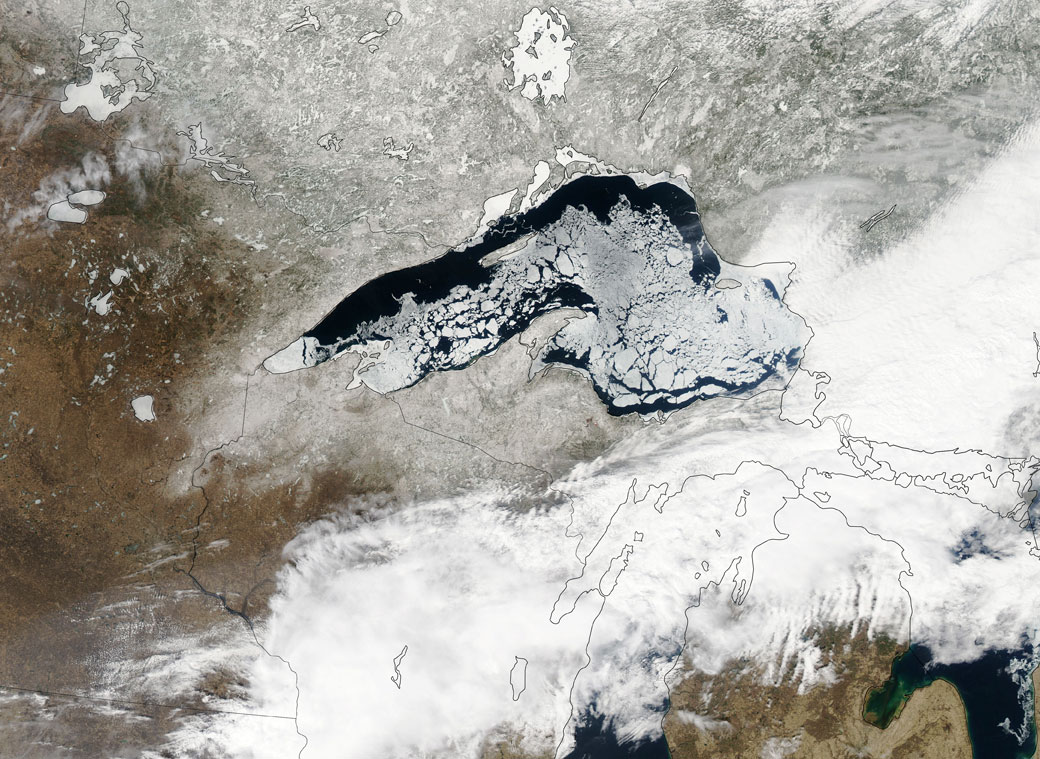TORONTO – It may be hard to believe that we’re a full month into spring, especially if you’re looking at the Great Lakes.

As of April 23, the Great Lakes Environmental Research Laboratory reported that the total ice cover for the Great Lakes was still at 35 per cent. Lake Superior alone is 67 per cent ice-covered. The Great Lake reached 95.3 per cent coverage on March 19.
READ MORE: Great Lakes ice delays shipping of grain, other commodities
NASA’s Aqua satellite captured the ice over Lake Superior as it passed above it on April 20.
Following a long and cold winter, the Great Lakes saw more ice cover this winter than it has in 20 years, with 92 per cent coverage, falling just short of the record-setting 95 per cent coverage in 1979.
READ MORE: Great Lakes nearly covered with ice for 1st time since 1994
And the below-average spring temperatures are helping to keep that ice around.
George Leshkevich, a physical scientist with the Great Lakes Environmental Research Laboratory told NASA that ice cover is well above normal for this time of year: In 2013, Lake Superior just had 3.6 per cent ice cover on April 20; in 2012, the ice had completely melted.
But those winters were substantially milder winters. Still, if you look back on 2009, which was a closer-to-average winter, the ice was completely melted by April 27.
Temperatures are expected to remain below normal in the Great Lakes region for the next week before heading to more average temperatures the following week, which may finally cause faster ice melt across the lakes.


Comments